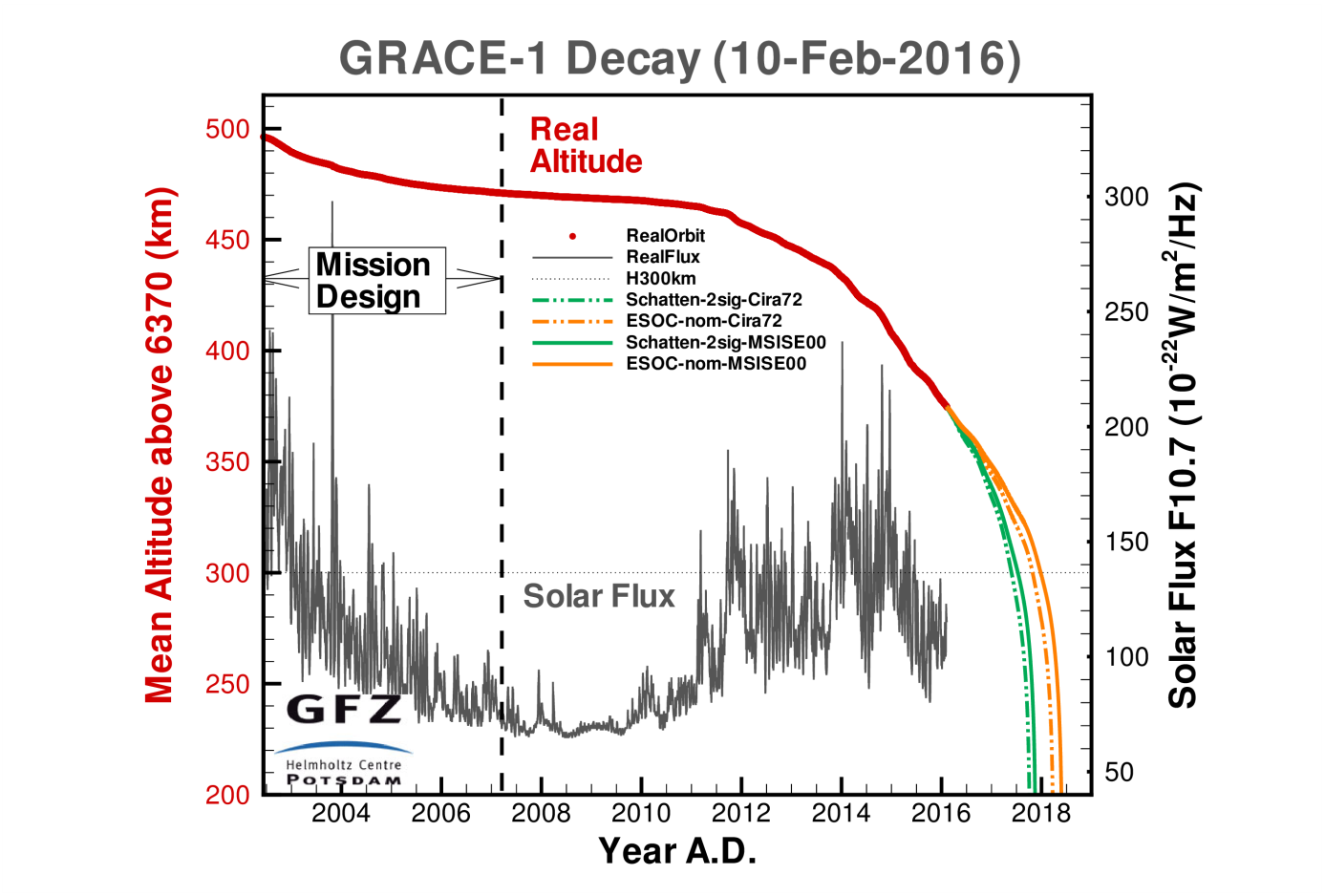The success of the EGSIEM project, especially the near real time (NRT) gravity service, is strongly based on the availability of GRACE mission data. The twin satellites were launched in March 2002 with a nominal mission lifetime of 5 years. Today, after more than 14 years in orbit, the main instruments such as the Microwave Assemblies (MWA) being used for satellite-to-satellite tracking or the accelerometers which observe non-gravitational forces are still in nominal operation on both satellites. This is not only a result of the incredible work of the satellite and instrument manufacturers, but also of the GRACE mission operations team consisting of the German Space Operations Center (GSOC), Airbus Defense and Space, JPL and the GFZ German Research Centre for Geosciences. GFZ provides the Deputy Operations Mission Manager, a polar satellite receiving station in Ny Ålesund (Spitsbergen) and contributes a considerable part of the mission operations cost.
The current factors that limit mission lifetime are atmospheric induced altitude decay, propellant consumption associated with attitude and configuration control and, most likely, a battery failure. The current consensus of the GRACE project is that atmospheric drag will most likely end the mission sometime between mid-2017 and early 2018 (see figure), while the battery status is presently stable, but unpredictable.
The GRACE batteries have a NiH2 common pressure vessel configuration with 16 Ahr capacity at beginning of life. This capacity is meanwhile reduced due to ageing and cell failures. On GRACE-A 18 out of 20 cells are still functioning and the performance has been stable since April 2011. On GRACE-B only 16 of 20 cells are functioning and 3 cell failures occurred just recently in 2015. The performance has stabilized since the most recent cell failure in November 2015, also thanks to the daily battery management of the mission operations team.
Nevertheless, the GRACE-B battery will be the limiting factor for science data collection capability during the future mission operations. The battery load capability is strongly related to the angle between the orbit plane and the Earth-Sun line (β´) as the GRACE orbit plane precesses at -1.117 degrees/day relative to the Sun, such that the Sun is in the orbit plane every 161 days. Due to the power system status and desire for longevity, this event will henceforth define a 161-day work cycle for science operations. As long as the β´ angle is greater than 69 degrees, the satellite operates using power only from its solar array. For smaller β´ angles, the satellites operate partly using the arrays, and partly using the battery. When β´ is near zero (i.e. the Sun is in the orbit plane), the battery may be used for as much as 40 minutes out of 90 minutes in each orbit. Near β´=0 events, the mission operations status depends on the battery health and operating environment.
To shed load on the batteries and to extend the GRACE mission lifetime the GRACE-A and -B MWAs and Accelerometer Instrument Control Units (ICU) have been regularly switched-off and -on since about 4 years for about 40 days around β'=0 events. As a result, since 2011 only 9-10 monthly gravity products can be produced per year. At present, the MWAs and ICUs have been switched-off again on March 31 and April 1, respectively. Switch-on is planned for approximately end of April/early May 2016. In addition to the battery health monitoring and related instrument shut-downs, the decreased performance of the star camera head #1 on GRACE-B requires since July 2014 satellite swaps approximately every 161 days in order to stay on the better performing head on GRACE-B. During these maneuvers the satellite separation decreases from nominal 220 km ± 50 km to 100-200m during fly by.
Further information is and will become available at http://www.csr.utexas.edu/grace/operations/mission_status/
Fig. 1: GRACE altitude decay as predicted based on various atmospheric drag models as of February 2016 (F.-H. Massmann, GFZ). Additionally the solar flux variation over the mission lifetime is indicated.
